- About Us
- Bearings
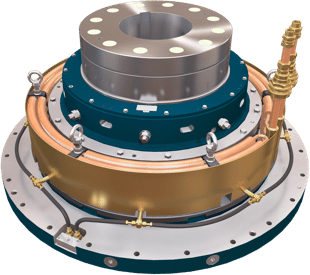 Vertical Bearings
Vertical Bearings
- AV Series
AV
LV SeriesLV
MV SeriesMV
V SeriesV
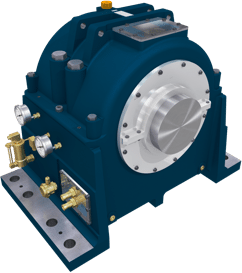 Horizontal Bearings
Horizontal Bearings
- HD Series
HD
IH SeriesIH
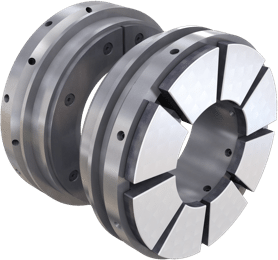 Tilting Pad Bearings
Tilting Pad Bearings
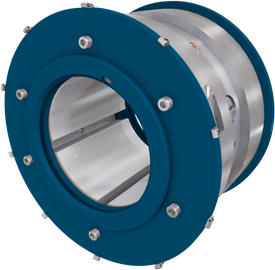 Journal Bearings
Journal Bearings
- Journal Pad Units
Journal
 Thrust Bearings
Thrust Bearings
- SE Series
SE
Omega EqualisedOmega
OmegaOmega
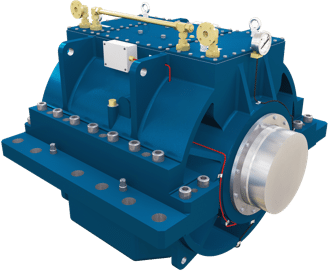 Marine Bearings
Marine Bearings
- Marine Gearbox Internals
Marine
Marine Propulsion Motor
and Generator BearingsEnter your email to download the full paper
"*" indicates required fields
Outline
Home > PTFE Faced Journal Bearing Technology for Marine Propulsion ApplicationsPTFE Faced Journal Bearing Technology for Marine Propulsion Applications
Rolls Royce and Michell Bearings and Heriot-Watt University, UK
This paper presents the results of a test programme in which a 500 mm diameter, PTFE-faced, segmented pad journal bearing was tested at both low speed and high axial misalignment. The bearing consisted of 8 PTFE lined journal pads, each 270 mm long and was subjected to specific loads up to 2.5 MPa (LxD), sliding speeds in the range 5 to 100 rev/min (0.13 – 2.6 m/s) and axial misalignments up to 1.0 mrad. The test results show that the bearing was able to tolerate combinations of low speed and high misalignment that would not be considered suitable for a traditional whitemetal bearing.
Introduction
The purpose of this paper is to present the results of an experimental investigation into the performance of a 500 mm diameter PTFE (polytetrafluoroethylene)-faced, segmented pad journal bearing under aligned and misaligned conditions. The experimental programme is based on duty conditions that would be commonplace in marine propulsion applications, including operation at very slow speeds and under overload conditions that, for conventional whitemetal-lined bearings, would normally require the use of high pressure oil injection.
Propulsion shaft bearings used in marine applications are required to operate across a wide speed range with running at very low speeds being routine. At the same time these bearings often have to accommodate axial misalignment of the shaft through the bearing. This misalignment is not constant but varies due to component wear and hull flexure arising from loading and sea state. A common bearing design employed to cater for misalignment is a plain journal bush with a spherical outer diameter. This spherical diameter allows the bearing surface to be aligned during installation, but its ability to accommodate changes in shaft alignment thereafter is restricted due to friction inhibiting the movement of the bush inside the bearing casing. Thus, the ability of a journal bush to accept misalignment in operation is mainly determined by the thickness of the lubricating oil film between the shaft and bearing surface. Under slow shaft speed conditions the oil film is frequently so thin, that plain bushes offer very limited ability to accept misalignment. This can mean that sometimes bearing realignments are necessary through the life time of the vessel to maintain satisfactory alignment between bush and shaft. Other measures often employed at the design stage are the use of very modest bearing specific loadings and hydrostatic high pressure oil injection to supplement the hydrodynamic oil film a low shaft speeds.
ACCESS FULL PAPERRecommended articles
Developments in PTFE Faced Thrust Bearings for use in Vertical Pump Applications
PTFE Faced Journal Bearing Technology for Marine Propulsion Applications
Naval Thrust Bearings
PTFE Faced Thrust Bearings – An OEM’s Viewpoint
Michell Bearings
Waldridge Way,
Simonside East Industrial Park,
South Shields,
NE34 9PZ.Tel: +44 (0) 191 273 0291
Email: sales@michellbearings.com
Email: hrteam@britishengines.com
Email: recruitment@britishengines.com© Michell Bearings.
Registered Office Address: 11 Glasshouse Street, St Peter's, Newcastle upon Tyne. NE6 1BS. Company registered in England and Wales no. 9390648

 PTFE Bearings
PTFE Bearings